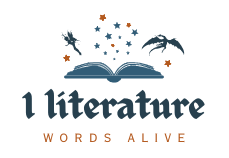Sally Rooney's 'Beautiful World, Where Are You' explores modern love through the lives of Alice and Eileen. You get a front-row seat to their emotional struggles amidst friendships and romantic confusions. The narrative cleverly intertwines email exchanges, highlighting deep connections and societal anxieties, particularly those of Millennials. Themes like fame, class contrast, and emotional vulnerability are woven into their relationships, capturing contemporary challenges like climate change and economic instability. As you navigate these complexities, you'll see reflections of your own experiences. There's more to uncover about the characters' journeys and the broader themes at play.
Overview of the Novel
Exploring the intricacies of modern relationships, "Beautiful World, Where Are You" investigates the lives of Alice, a successful novelist, and her best friend Eileen. Set in contemporary Europe, particularly in Ireland's West, the novel dives deep into the emotional struggles faced by young people maneuvering adulthood.
Through sharp dialogue and introspective narratives, Rooney captures the complexities of fame, wealth, and romantic confusion that define their experiences. The narrative also reflects the balance between hope and despair, akin to the characters' journeys in the search for identity, showcasing how personal equilibrium is essential in a chaotic world.
The story alternates between Alice and Eileen's daily lives and their intimate email exchanges, providing you with a unique glimpse into their thoughts and societal observations. This format not only enhances their friendship but also highlights the tensions and anxieties prevalent in modern relationships.
You'll find yourself resonating with their challenges, as the book masterfully reflects the emotional depth of Millennial experiences.
Critically acclaimed for its relatable characters, "Beautiful World" resonates with readers who are also grappling with generational challenges. As you explore Alice and Eileen's journey, you'll appreciate Rooney's minimalist style, which captures the essence of young adulthood's struggles, making it a poignant read for anyone seeking connection in a fragmented world.
Character Dynamics
In "Beautiful World, Where Are You," you see how complex friendships shape the characters' lives, especially between Alice and Eileen. Their bond, filled with support and vulnerability, contrasts sharply with the class differences highlighted by Alice's relationship with Felix.
As you explore these dynamics, you'll uncover how personal struggles and societal expectations challenge their connections, much like the way immigrant families navigate their circumstances in urban poverty and societal challenges.
This interplay of relationships reflects the timeless themes of resilience and self-discovery found in various narratives.
Complex Friendships Explored
Complex friendships in Sally Rooney's 'Beautiful World, Where Are You' reveal the intricate dynamics that shape the characters' lives. The bond between Alice and Eileen is particularly poignant, capturing the emotional struggles faced by Millennials. Their friendship oscillates between intimacy and tension, reflecting the complexities of modern relationships.
Consider these key aspects of their friendship:
- Eileen's Unrequited Love: Eileen's secret feelings for Simon highlight how unrequited love complicates friendships and creates emotional turmoil.
- Candid Communication: The email exchanges between Alice and Eileen serve as a lifeline, allowing them to discuss personal and societal issues openly, deepening their connection.
- Past Influences: Simon's reemergence in Eileen's life brings nostalgia and tension, reminding us how past relationships continuously influence present dynamics.
Through these elements, Rooney illustrates how complex friendships are woven with emotional struggles, affecting each character's journey.
As you navigate the pages, you're reminded that love, friendship, and longing often coexist, leading to profound insights about the nature of human connections in today's world.
Class Contrast in Relationships
How do class differences shape the relationships in Sally Rooney's 'Beautiful World, Where Are You'? The class contrast between Felix, a warehouse worker, and Alice, a successful novelist, highlights a significant socio-economic divide. This dynamic creates tension, as Felix often feels vulnerable and out of place in Alice's world of literary elites. He grapples with feelings of inadequacy, which complicates their connection.
Similarly, Eileen and Simon's relationship illustrates class contrast. Simon's modest lifestyle and devoted Christian values clash with Eileen's financial instability as an editor. Their differing backgrounds lead to emotional vulnerability, as each character navigates their insecurities against societal expectations.
Rooney expertly explores how these socio-economic divides affect personal relationships, showing that vulnerability can stem not just from individual circumstances but also from the societal structures surrounding them.
Characters wrestle with their identities and desires, often feeling like they don't belong in each other's worlds. This interplay between different class backgrounds serves as a poignant lens for examining broader issues of class stratification and the impact of wealth on intimacy, ultimately revealing the complexities of modern love in a divided society.
Themes Explored

Sally Rooney's "Beautiful World, Where Are You" dives deep into themes that resonate with the struggles of contemporary life. As a Millennial, you might find the exploration of human vulnerability and emotional turmoil particularly relatable.
The novel captures the essence of modern relationships, reflecting the pressures you face daily, particularly regarding mental well-being and the mind-body connection in wellness literature.
Key themes include:
- Friendship Dynamics: The bond between Alice and Eileen showcases how friendships can evolve amidst personal challenges, serving as a mirror for broader social issues.
- Career Uncertainty: Through Alice's literary success, Rooney critiques the obsession with fame and the constant comparison that comes with it, highlighting the anxiety that many Millennials experience.
- Digital Communication: The impact of technology on personal relationships is palpable, illustrating how it can both connect and isolate you in today's fast-paced world.
Narrative Techniques
The dual narrative structure in "Beautiful World, Where Are You" pulls you into the characters' lives by alternating between their experiences and insightful email exchanges. This technique allows you to see their inner thoughts while exploring the complexities of contemporary relationships.
Much like in John Green's works, the character development reveals relatable and flawed personalities, enhancing emotional engagement. Rooney's vivid descriptions and attention to gestures deepen your emotional connection with the protagonists, making their struggles feel personal and relatable.
The email exchanges serve as a modern communication device, revealing the characters' philosophies, anxieties, and personal conflicts. You can almost hear the cadence of their voices through Rooney's minimalist and direct writing style. Sharp dialogue and subtle humor enhance the narrative, capturing the intricacies of love and friendship in a contemporary context, similar to how Hazel and Augustus navigate their relationship amidst challenges in a heartfelt exploration of love.
Rooney also employs cinematic techniques, such as abrupt scene changes, to keep you engaged and heighten dramatic moments. These shifts create a dynamic reading experience, allowing you to immerse yourself fully in the characters' emotional landscapes.
Societal Reflections

In "Beautiful World, Where Are You," you'll notice how Rooney captures the disenchantment surrounding climate change and the emotional vulnerabilities that come with it.
This mirrors current global issues like the legalization of recreational drugs and the ethical dilemmas posed by artificial intelligence, reflecting the complexities of modern society.
The characters' struggles reflect the complexities of class and identity, showcasing how these societal dynamics shape their lives.
As you read, consider how these themes resonate with your own experiences and observations in today's world.
Climate Change Disenchantment
How does climate change shape our collective psyche? In Sally Rooney's "Beautiful World, Where Are You," you see how climate-related anxiety intertwines with personal relationships, reflecting the disenchantment many Millennials feel. The characters grapple with their emotional turmoil, highlighting the disconnect between their everyday lives and the looming global crisis.
Reflect on these themes:
- Disillusionment with Authority: Characters voice frustration over political and corporate inaction on climate change, deepening their sense of helplessness.
- Existential Dread: The narrative captures how the climate crisis fosters a pervasive anxiety that seeps into personal interactions and decisions.
- Interpersonal Impact: As characters navigate their relationships, they're constantly reminded of the broader societal issues, creating tension between personal desires and collective responsibilities.
Rooney's portrayal of climate change isn't just background noise; it's a fundamental part of her characters' emotional landscapes.
This reflective discourse invites you to confront the reality of climate-induced disenchantment and its profound effects on our psyche, urging you to reflect on how these global challenges reshape personal identities and relationships.
Emotional Vulnerability Exploration
Emotional vulnerability stands at the heart of "Beautiful World, Where Are You," revealing the intricate layers of human connection amid societal pressures and personal turmoil. Through the complex relationships of characters like Alice and Eileen, you see how they engage in deep conversations about their struggles and the expectations placed on them by society.
Rooney captures the essence of modern life, reflecting Millennial concerns about uncertainty and anxiety. The characters' profound emotional growth highlights how early life challenges shape adult relationships and self-perception.
As they share their fears, desires, and existential reflections through email exchanges, you witness a raw expression of emotional vulnerability that resonates in today's digital age. These intimate moments serve as a reminder that genuine connection often lies beneath the surface of literary success and societal façades.
Rooney critiques the disconnect between perceived achievements and authentic human experiences, urging you to acknowledge your vulnerabilities in contemporary discourse. In a world grappling with climate change and societal collapse, these explorations of emotional vulnerability not only enrich the narrative but also offer you a mirror to reflect on your own complexities in maneuvering modern life.
Class and Identity Dynamics
Class dynamics pulse through "Beautiful World, Where Are You," shaping not only the characters' identities but also their interactions. You see how Alice's privileged background contrasts sharply with Felix's working-class life, creating tension that influences their relationship. This disparity highlights how class impacts emotional connections and perceptions.
Consider these key points:
- Economic Disparities: Alice and Felix's differing financial situations create misunderstandings that complicate their relationship, showcasing how class influences identity.
- Millennial Concerns: Eileen's financial struggles as a young editor reflect broader economic instability, illustrating the challenges many face in defining their aspirations amid class limitations.
- Critique of Fame: Rooney critiques the obsession with literary success, suggesting that the pursuit of social status can overshadow genuine relationships and emotional connections.
Through these dynamics, Rooney sheds light on the intersection of class and emotional vulnerability. You can't ignore the complexity of identity as characters navigate societal expectations, revealing how deeply class shapes their lives and interactions.
Ultimately, the novel invites you to reflect on the nuances of relationships within the framework of class and identity.
Emotional Growth and Resilience
As the characters in "Beautiful World, Where Are You" traverse their complex relationships, they undergo profound emotional growth that shapes their identities. Their youthful break-ups leave lasting impacts, informing how they connect with others later on. Rooney skillfully illustrates that emotional resilience isn't just about moving past suffering; it's about acknowledging how past pain influences present experiences.
This journey of emotional growth mirrors the exploration of enduring family ties in the importance of human connections during turmoil, demonstrating how shared experiences can fortify relationships.
The protagonists engage with existential themes, emphasizing introspection amid societal pressures and personal turmoil. Late-night conversations between Alice and Eileen become a crucial space for exploring emotional vulnerabilities, highlighting the importance of communication in building resilience. These exchanges foster a deeper understanding of their feelings and allow them to confront their fears together.
Aging further enhances their perspective, enabling them to reflect on earlier emotional experiences. This reflection sharpens their capacity for understanding and growth, helping them tackle contemporary challenges with newfound strength.
Ultimately, Rooney's narrative masterfully depicts how emotional growth and resilience intertwine within relationships, illustrating that traversing through life's complexities can lead to profound personal transformation.
Critical Reception

While many readers have embraced "Beautiful World, Where Are You" for its relatable characters and sharp dialogue, critics have offered a range of perspectives on its themes and narrative style. The critical reception has been generally positive, showcasing Rooney's ability to capture the emotional depth of modern relationships.
Yet, some critiques highlight certain aspects that divide opinion.
- Many appreciate the balance of humor and serious themes, stimulating discussions on literature's role in addressing Millennial concerns, similar to the way stories of resilience and hope highlight courage and determination to overcome challenges.
- Others feel the book's conversational nature lacks the depth found in Rooney's earlier works, leaving them wanting more from character exploration.
- Despite being labeled plotless by some, many critics laud its profound exploration of existence and vulnerability in contemporary society.
Comparisons to Previous Works
Sally Rooney deepens her exploration of Millennial angst in "Beautiful World, Where Are You," drawing clear parallels to her previous works like "Normal People" and "Conversations with Friends."
The novel maintains her signature reliance on dialogue and email exchanges, creating a familiar conversational style. While "Normal People" intricately dissects a romantic relationship, "Beautiful World" expands the narrative to include a broader range of characters and their diverse relationships, reflecting more complex societal issues.
This evolution in Rooney's writing mirrors the resilience found in survival stories like Louis Zamperini's during extreme adversity, adding layers to the characters' emotional journeys.
You'll notice a shift in tone as "Beautiful World" takes on a more introspective quality compared to the emotional immediacy found in "Normal People."
This change prompts you to contemplate deeper character development and the intricacies of their connections. Rooney also weaves in themes of fame, class dynamics, and societal critique, building on the conversations initiated in her earlier works.
This evolution showcases her growth as a writer, encouraging you to engage with the text on multiple levels.
Ultimately, "Beautiful World" not only revisits familiar themes but also enriches them, inviting you to reflect on the nuances of contemporary relationships in a rapidly changing world.
Cultural Significance

Rooney's "Beautiful World, Where Are You" resonates deeply with the Millennial experience, capturing the essence of a generation maneuvering career uncertainties and romantic confusion. This novel holds substantial cultural significance as it addresses the complexities of modern life, making it relatable to many.
Here are three key elements that highlight its cultural impact:
- Career Uncertainty: The characters grapple with unstable job markets, reflecting widespread Millennial anxieties about career paths and financial stability.
- Class Dynamics: Rooney explores socioeconomic disparities through characters like Felix, illuminating how class affects personal relationships and contributes to the broader discourse on inequality.
- Modern Communication: The use of email exchanges showcases contemporary friendships shaped by digital interactions, emphasizing how technology influences human connection.
Set against the backdrop of Ireland's West, the novel's strong sense of place enriches its cultural significance, immersing you in authentic Irish experiences.
Conclusion
In "Beautiful World, Where Are You," you'll find that love isn't just a fairy tale; it's messy and real. As you explore Sally Rooney's intricate character dynamics, you might wonder—can love truly thrive in a chaotic world? Rooney suggests that despite the noise, emotional growth and resilience can emerge. As you reflect on the novel, consider this: is vulnerability the key to deeper connections? Immerse yourself and see how her characters navigate this compelling journey.



